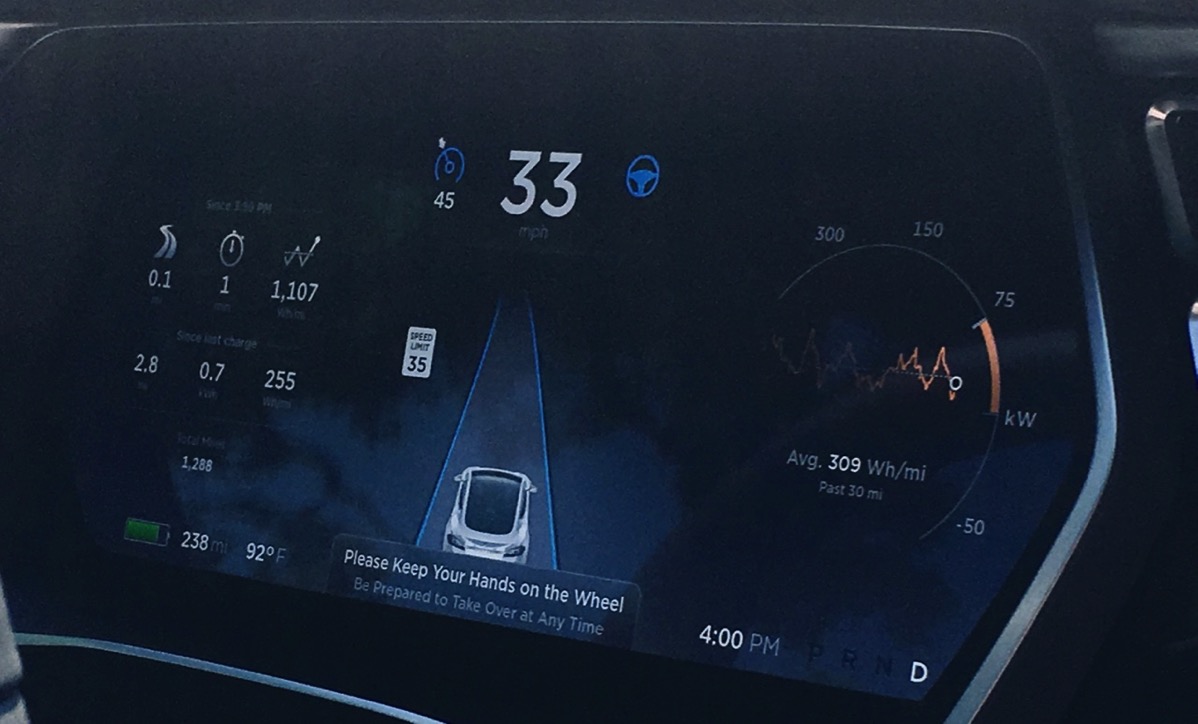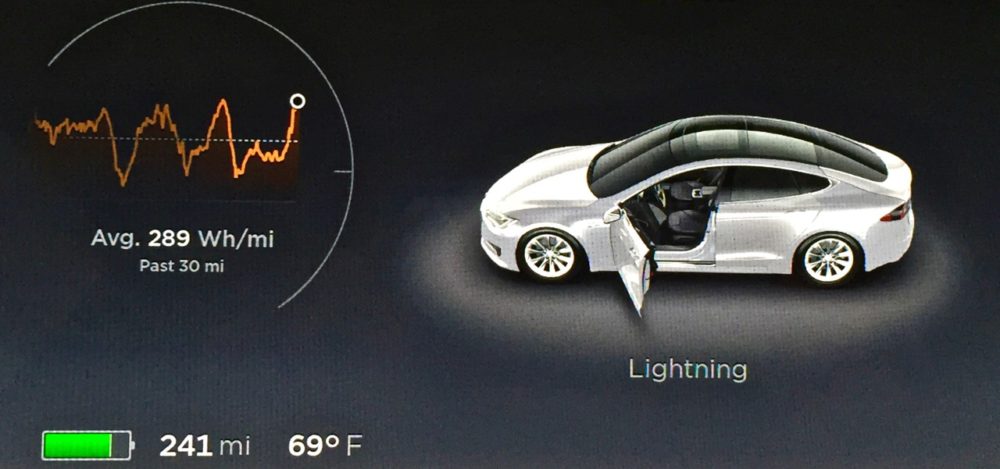
Photo taken by my son while I was driving on autopilot
Odometer: 1,503
I went to Worcester Airport last Sunday night to pick up my son and got stuck in rainy, construction traffic on the way home last night. While that would have been normally been a frustrating delay, Lightning’s autopilot took a lot of the stress out of it.
I think this situation is a bit non-intuitive for a lot of non-Tesla drivers. Most people think of radar-based cruise control as a tool that helps the driver most during highway driving, and it certainly does that. But I find that where it really shines is in stop-and-go traffic. You simply set cruise control and auto-steer to on, and autopilot takes care of all the starting, stopping, and adapting to cars cutting into your lane.
One issue that you as the driver-in-command have to to watch out for, though, is a situation that resulted in a minor crash in Europe: a car pulling out of your lane could expose a stopped car. The resulting gap in traffic will cause the Tesla to accelerate to close the gap, but then the autopilot sensors can’t detect the stopped car until it is quite close.
This situation arises because the long-range radar system is doppler-based, so non-moving objects don’t raise an alarm. The ultrasonic sensors are short-range and don’t detect objects more than a few feet away. That leaves the forward-looking camera as the only sensor able to see and detect the stationary object. The current autopilot system only has one forward-looking camera, so you don’t get any stereoscopic ranging. The result: the Tesla accelerates and suddenly brakes when the stationary object comes into range. If your setting for cruise control is for a high speed (and remember, Teslas accelerate to speed quite quickly), you can end up hitting the stationary car.
I haven’t run into this problem personally, but it’s a great example of the trade-offs involved in autopilot use. Autopilot means that I don’t have to be constantly accelerating and braking in stop-and-go traffic; the autopilot is much better at repeating that process over and over than I am. On the other hand, while I don’t have to do all the routine starting and stopping, I do have to constantly watch for exceptional situations that may require my intervention. Pilots do this all the time, and it’s part of their training on how to properly use autopilots. For automotive drivers, though, this may take a bit of getting used to.
